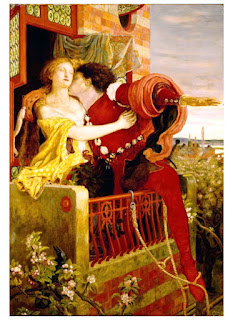“… i didn’t fall in love of course
it’s never up to you
but she was walking back and forth
and i was passing through”
-Leonard Cohen, Book of Longing
We were all made out of blueprints spelled L-O-V-E. My father once told me that life was about having stories to tell; that you measured happiness in all the tales you could tell a group gathered by the fire. I believed him. Love, too, is an adventure. Like Coelho said,
“Love can take us to heaven or hell, but it always takes us somewhere. Therefore, be prepared to travel…”.
I’ve seen waterfalls and fiery dungeons, fireworks and sinking ships, all in the same love story. I could tell you what love feels like, five times over, in five different ways, but they’d be as unlike each other as night is to day. That’s the best thing about love stories- you’ll never find two alike. Today, let’s discuss eight such love stories in history that burned so bright, we can still see them, several generations down the line.
1. Salim-Anarkali
Image source: Google copyright free image, under Creative Commons License
“Kaanton ko murjhaane ka khauff nahi hota”
(Thorns do not fear death)
How you know them: ‘Mughal-e-Azam’, directed by K. Asif.
The time-period they claimed: 1580-1600
Salim, was the son of the renowned Mughal Emperor, Akbar. He fell in love with a beautiful courtesan named Anarkali. This outraged Akbar’s sense of royalty and he castigated the lovers. She, being a dancing girl wasn’t from a “noble birth”, and Salim, being a prince, it would be blasphemy for him to associate with anybody below his standards. The emperor undertook various tactics to make Anarkali fall in the eyes of Salim, so he may renounce his love for her, but when Salim realized this plot, he declared war against his father, which he inevitably lost and was sentenced to death. In order to keep him alive, Anarkali denied the love affair. However, she was entombed alive in a brick wall, right in front of Salim’s eyes. Some say that the tomb had a secret tunnel through which she escaped, never to return again. But Salim, who went on to be Jahangir, spent his entire life mourning his one true love, and died with her name on his lips.
What you learn: Even today, we see lovers parting ways because their families wouldn’t allow it. In the remote villages of India, honor killing is still rampant, your race/caste determines your marriage. It’s high time the world realized that none of that matters. No skin color is deep enough, and no birth low enough, to stand in the way of love.
2. Layla-Majnun
“I pass by these walls, the walls of Layla
And I kiss this wall and that wall
It’s not Love of the walls that has enraptured my heart
But of the One who dwells within them”
– Qays ibn al-Mulawwah
How you know them: Folk-lore.
The time-period they claimed: The first poem about them originated in 11th century Arabia.
Qays ibn al-Mulawwah was just a boy when he fell in love with Layla. He was devoted to her and wrote several poems that he would read at street corners, proclaiming his love to anybody who would listen. People called him ‘Majnun’, meaning ‘the possessed’. When he asked for Layla’s hand in marriage, her father did not want to give her to a madman, and so, married her off to somebody else. This caused him great distress and he receded into the wilderness, writing poetry, and reading it to himself. Layla was a faithful wife, but when her husband passed away, she finally thought she would be united with her lover, but society forbade her to leave home, and compelled her to grieve for 2 more years. Layla couldn’t bear the distress any longer and died of a broken heart. When Majnun received news about her death, he travelled to where she was kept, and died weeping his heart out by her grave.
What you learn: Several times, we judge people on the basis of what we’ve heard about them. We openly criticize our friend’s choice, not knowing the truth about their relationship. He may be too-anything, but if he makes her happy, then please let them live like it’s nobody else’s business.
3. Shah Jahan-Mumtaz Mahal
“Rahul had wondered how someone could love their beloved so much that their dedication to them became one of the wonders of the world.”
-Faraaz Kazi
How you know them: The Taj Mahal is a testament.
The time-period they claimed: 1612-1631
Shah Jahan, the son of Jahangir, was 14 years old, strolling down the Meena Bazaar, accompanied by fawning courtiers, when he caught sight of Arjumand Banu Begum, hawking silk and glass beads. She was a Persian princess of 15. He went home and told his father he had found his match. He grew to have other wives too, but none that he loved as much/more than Begum. He named her ‘Mumtaz Mahal’ meaning ‘the jewel of the palace’. When Mumtaz died, giving birth to her 14th child, he promised to build her a mausoleum and never marry again. The court went into two years of mourning, and he took 22 years and 22,000 workers to erect a monument in her memory that went on to become one of the Seven Wonders of the World. When he died, his tomb was buried beside her, in a secret chamber of the Taj Mahal.
What you learn: Some stories become so big, that history ceases to be enough to contain them.
4. Romeo-Juliet
Image source: Google copyright free image, under Creative Commons License
“I defy you, stars.”
-Shakespeare, Romeo and Juliet
How you know them: Shakespeare penned the play ‘Romeo and Juliet’ between 1591-1596.
The time-period they claimed: The Renaissance period, Verona
Romeo and Juliet fell in love with each other at a party. However, since they came from families that hated each other, they soon realized that they would never be allowed to be together. So, with the help of Friar Lawrence, they got married in secret. Before their wedding night, Romeo had killed Juliet’s cousin in a duel, and so, was banished from seeing Juliet. He could not return to the city where a death sentence awaited him. Juliet’s parents implored her to marry Paris as they are oblivious to her marriage with Romeo. She refused in the beginning, but gave in soon after, planning her escape by faking death. Friar Lawrence gave her a sleeping potion, and she was put in a tomb. However, Romeo, not knowing the plan, visited the grave, and on finding her dead, killed himself. When Juliet awakened, she found her lover dead by the side of her tomb. She kissed him, hoping that the remnant of the poison would kill her, but hearing the approaching watch, she unsheathed Romeo’s dagger and stabbed herself with it.
What you learn: Communicate with your partner. Often, in the modern day world, despite having various modes of communication, we isolate ourselves more and more, which leads to a lot of misunderstanding. Maybe you’ll be the first couple in all of history to use language for it’s primary purpose: communication.
SOURCE





No comments:
Post a Comment